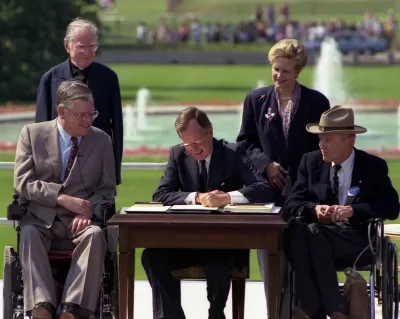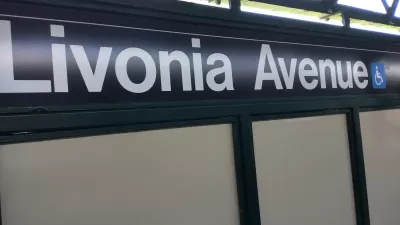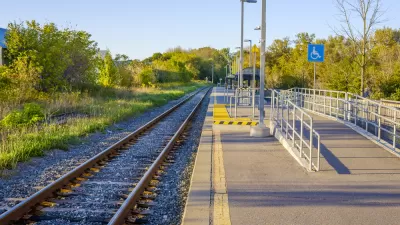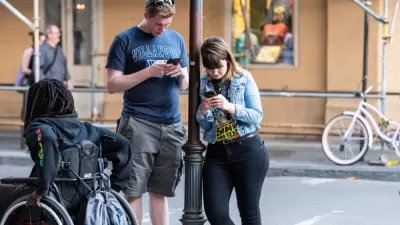While many cities have shown efforts to implement accessible design since the 1990 adoption of the American Disabilities Act, more must be done.

Steve Wright, writer, marketer and disability rights activist, provides a guest post for Smart Cities Dive to commemorate the 30th anniversary fo the sining of the Americans with Disabilities Act.
When the Americans with Disabilities Act (ADA) turns 30 this month, everyone whose work impacts the built environment — architects, engineers, urban designers, town planners and public officials — should be scrambling to observe the landmark federal civil rights legislation.
While the ADA is not a building code or some kind of zoning that can be ignored via variance, its biggest impact by far has been on the civic realm. Buildings, streets, crosswalks, trains, buses, parks, natural trails, city halls, schools, malls, libraries and much more have been made more accessible because of the ADA's adoption on July 26, 1990.
We still have a long way to go toward removing old barriers and approaching accessible design in a creative way, but we certainly are ahead of the game compared to the way life was before the ADA.
FULL STORY: The ADA is turning 30, but the built environment is still far from inclusive

Study: Maui’s Plan to Convert Vacation Rentals to Long-Term Housing Could Cause Nearly $1 Billion Economic Loss
The plan would reduce visitor accommodation by 25,% resulting in 1,900 jobs lost.

North Texas Transit Leaders Tout Benefits of TOD for Growing Region
At a summit focused on transit-oriented development, policymakers discussed how North Texas’ expanded light rail system can serve as a tool for economic growth.

Why Should We Subsidize Public Transportation?
Many public transit agencies face financial stress due to rising costs, declining fare revenue, and declining subsidies. Transit advocates must provide a strong business case for increasing public transit funding.

How to Make US Trains Faster
Changes to boarding platforms and a switch to electric trains could improve U.S. passenger rail service without the added cost of high-speed rail.

Columbia’s Revitalized ‘Loop’ Is a Hub for Local Entrepreneurs
A focus on small businesses is helping a commercial corridor in Columbia, Missouri thrive.

Invasive Insect Threatens Minnesota’s Ash Forests
The Emerald Ash Borer is a rapidly spreading invasive pest threatening Minnesota’s ash trees, and homeowners are encouraged to plant diverse replacement species, avoid moving ash firewood, and monitor for signs of infestation.
Urban Design for Planners 1: Software Tools
This six-course series explores essential urban design concepts using open source software and equips planners with the tools they need to participate fully in the urban design process.
Planning for Universal Design
Learn the tools for implementing Universal Design in planning regulations.
Ascent Environmental
Borough of Carlisle
Institute for Housing and Urban Development Studies (IHS)
City of Grandview
Harvard GSD Executive Education
Toledo-Lucas County Plan Commissions
Salt Lake City
NYU Wagner Graduate School of Public Service





























